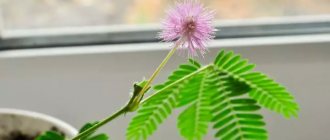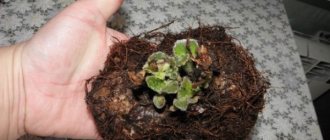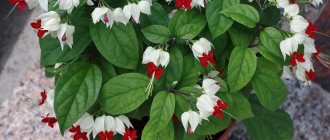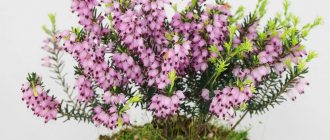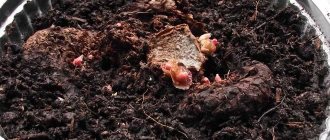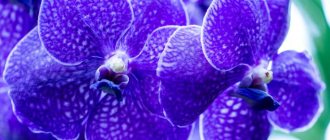Native to the tropics of Central and South America, Mimosa pudica is a species of creeping herb or shrub that is commonly called a sensitive plant for its intriguing leaf movement when touched. Tiny hairs line the leaves of Mimosa pudica. These hairs are very sensitive to touch, temperature and movement, and when triggered they fold inward. This response to stimulation is part of Mimosa pudica's natural defense mechanism.
Mimosa pudica makes excellent houseplants and generally requires little care. They have delicate, fern-like leaves and light purple flowers that resemble small pompoms. Young plants grow upward, but over time they acquire the habit of crawling. They grow very fast.
Although Mimosa pudica is most often grown indoors as a houseplant, it can be grown outdoors in warmer areas, but be careful as Mimosa pudica can easily become established, especially in tropical climates. She prefers temperatures from 18 to 23 degrees. Move this plant indoors when temperatures become much warmer or cooler.
Mimosa pudica care
Mimosa pudica is an easy-to-care flowering plant from the legume family. With plenty of light and water, even a houseplant lover can enjoy Mimosa pudica in their own home. Its delicate foliage and leaf movement are among its most attractive qualities. Unlike the Venus flytrap, Mimosa pudica closes its leaves for self-defense.
This plant not only has visually attractive characteristics, but also practical uses. For example, it has excellent cleansing properties and also has antibacterial and antioxidant properties. Botanists also continue to actively study Mimosa pudica to better understand their habits.
Mimosa pudica is characterized by several pests. These include spider mites and Mimosa webworms, both of which wrap Mimosa leaves in a shy web that prevents them from closing quickly. Mimosa pudica is also susceptible to other common houseplant pests such as mealybugs and thrips. Fortunately, Mimosa pudica is not particularly susceptible to any diseases.
Important : Mimosa pudica is aggressive in tropical climates. Use caution when planting outdoors as it can spread quickly and become established naturally.
Brief description of the plant
Mimosa pudica (lat.) is a herbaceous perennial that is grown at home as an annual. Mimosa has more than 430 species. Found naturally in tropical forests of America and Africa. There she grows like a weed. At home, it reaches a height of up to 40 cm, and in natural conditions about 1.5 m. It begins to bloom in May and continues until October. Small, fluffy pink-violet balls appear at the tips of the branches. The smell is not pronounced. The leaves are very delicate, miniature. The shape resembles a fern leaf.
Photo: Mimosa in natural conditions.
The plant lives according to its internal rhythm established by nature. There are waking hours and there are sleeping hours. It resembles the human rhythm, only sleep time does not depend on the time of day. Mimosa herself knows when sleep is needed. These are not necessarily night hours; every 22 hours she folds the leaves to rest. After 30 minutes of “sleep”, she again straightens the leaf plates and lives as usual.
Why is mimosa “shy”
The main beauty of mimosa is that it can curl its leaves in response to various stimuli. Be it a touch, a breath of wind, drops of water or a sudden change in temperature. Hence the name. For this property, it is grown by many amateur gardeners and collectors. Scientists already know why and how this happens. At the very base of the roots there are special water membranes. Each is strewn with sensory membranes that respond to changes in pressure. When a mimosa is touched, the water rushes to the point of contact, and from its heaviness, the leaf curls up.
There is one more, this time not very pleasant, property of mimosa. If you damage the mimosa root, it will release a toxic substance that can cause poisoning. There are known cases when cattle grazing in the fields were poisoned.
Photo: Properties of mimosa pudica.
| Therefore, when working with mimosa, try not to damage its roots and work with gloves. Children need to be explained the possible danger, and access should be limited to very young children. |
In addition to these features, as scientists have found out, mimosa has even more interesting properties. She “remembers” her potential enemy or friend. And if the touch does not pose a threat to her life, she will not fold her leaves. This will save you a lot of energy. This behavior is more typical of animals, and here is mimosa!
She also understands whether a living creature touched her or not.
For example, when a person touched its roots, it released a poisonous gas, but when glass or metal was brought in, it did not react.
Photo: Mimosa has curled its leaves.
I also have a mimosa pudica, which I grew from seeds, but more on that below. I want to tell you about my experience interacting with her. When the first real leaves appeared, I was interested in touching them and seeing how she reacted. But I noticed that she doesn't always fold them. Sometimes she didn’t react to touch at all. And that’s when I found out that she is a “self-learner” and will not waste her energy in vain. I understood why she didn't react to my touch. It was not a threat! And I very quickly realized then that there is no need to tire the plant. After all, it’s just for fun, but she’s “alive” and is wasting her energy.
Another point - these are children! The folding of leaves is fascinating and appealing not only to adults, but also to their little children. Moreover, children can start playing with mimosa. And constant curling of leaves does not benefit her. Over time they will begin to dry out and then fall off. The mimosa itself will weaken from the constant loss of energy.
| Conclusion: Place the flower out of reach of children and explain to them that the plant is alive and very unusual. |
Photo: Mimosa in a pot.
Temperature and humidity
Due to its light and temperature requirements, this plant is most often grown indoors as a houseplant. An average room temperature of 18 to 23 degrees is ideal for Mimosa pudica as it does not tolerate extreme heat or cold temperatures. It can be grown successfully outdoors in warm climates, although it can spread aggressively and become a weed.
Mimosa pudica has moderate to high humidity. Unless your home is particularly dry, average humidity in the home should be sufficient for Mimosa pudica. Otherwise, install a humidifier nearby or place the pot of Mimosa pudica on a tray of pebbles filled with water.
Main types
Shy or Mimosa pudica L
Prefers damp places and thickets. The main habitats are the lowlands of the Antilles and the territory of Brazil. The appearance corresponds to evergreen plants, subshrubs or shrubs with straight shoots up to one meter high. Characterized by the presence of spines and pubescence.
Small flowers are collected in heads at the top of the shoots. The predominant color is pink-violet. Flowering - in summer. Grown as an annual ornamental plant.
Rough or Mimosa scabrella
The birthplace of this twenty-meter plant is South America. The panicles of numerous flowers are painted white.
Photo gallery
Lazy or Mimosa pigra
An amazing perennial ornamental plant. Straight and branched shoots reach a height of 0.5 meters. White flowers are characterized by spherical heads. Fern-like leaves are highly sensitive.
Mimosa pudica propagation
Propagation is usually done by seeds or stem cuttings. First, cut a branch with one leaf node and plant it in a peat moss and perlite planting medium. Place it in a warm, bright place, covered with clear plastic after one to four weeks. Plant the seeds in the same way under the same conditions. The seed should germinate in one to four weeks.
How to care?
If you live in an area where mimosa trees are not considered an invasive species and you decide to grow these beautiful trees on your property, there are a few important steps to consider:
- It is worth growing mimosa in places with plenty of sunlight. If you are replanting a seedling, pay attention to the soil. If it is hard, add compost or soil conditioner to the planting hole to improve drainage.
- Water the seedling when the soil is dry. Continue doing this until its roots are strengthened. It will only take one season. After this, water the tree, but only during severe droughts. The mimosa plant (photo below) will die in soggy soil. Mulching conserves water and increases the time between waterings.
- Don't use too much fertilizer. This speeds up growth, but can lead to weakening branches. Make sure you use a balanced fertilizer.
- Use scissors to trim branches that are overcrowded, as well as dead and weak shoots. Be sure to disinfect your tool blades after each use so you don't spread diseases to other garden plants.
Important Notes
These plants are not long-lived. Mimosa trees are susceptible to damage from diseases and insects. They will likely grow quickly, reach their peak, and then die in about 15 years. These trees produce long seed pods that set quickly, even in winter. The seeds are freely dispersed by the wind, so you'll likely find new seedlings in your lawn and garden next spring. You may even have more trees than you wanted.
While these trees are beautiful and can make your yard more attractive, their impact on the environment must be taken into account. It is important to understand the challenges these trees can present before you start growing them. For example, their root systems are invasive and can lift and crack concrete. The damage they cause can be considerable.
